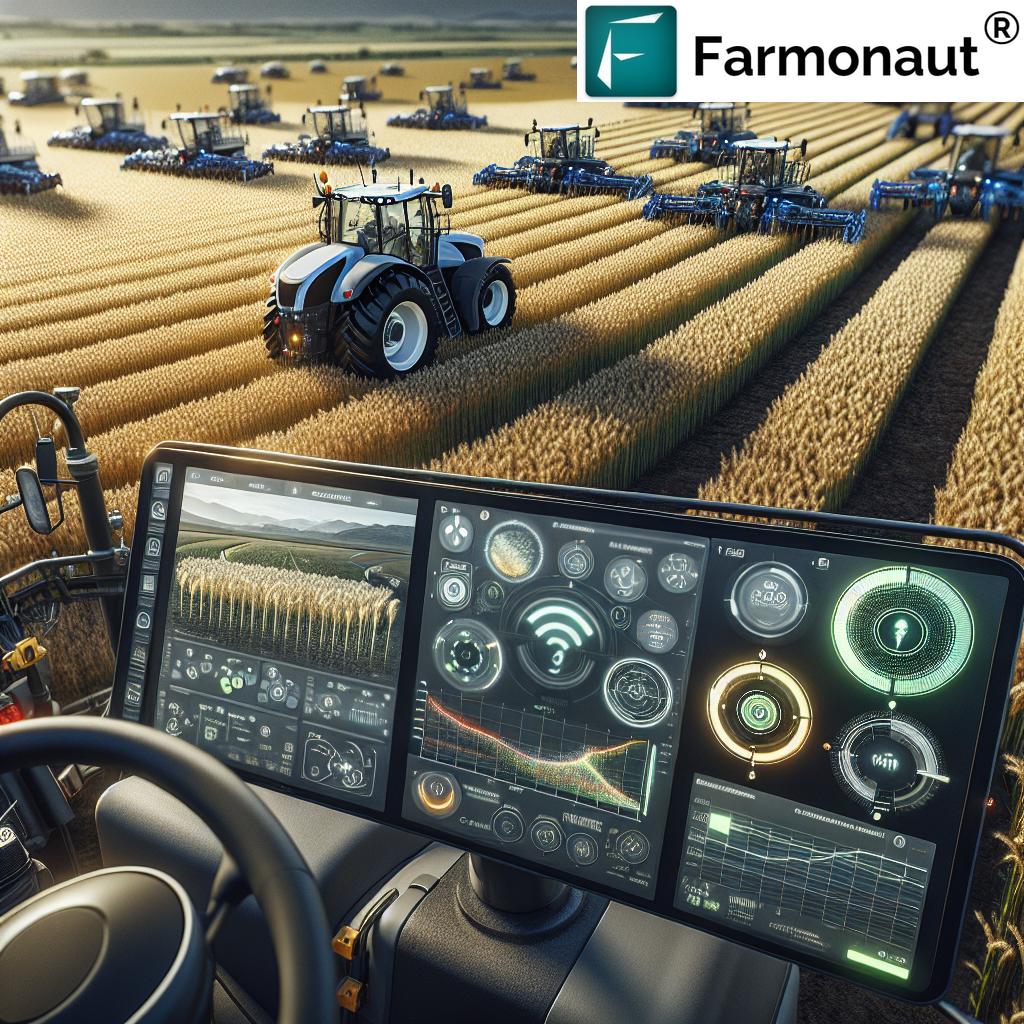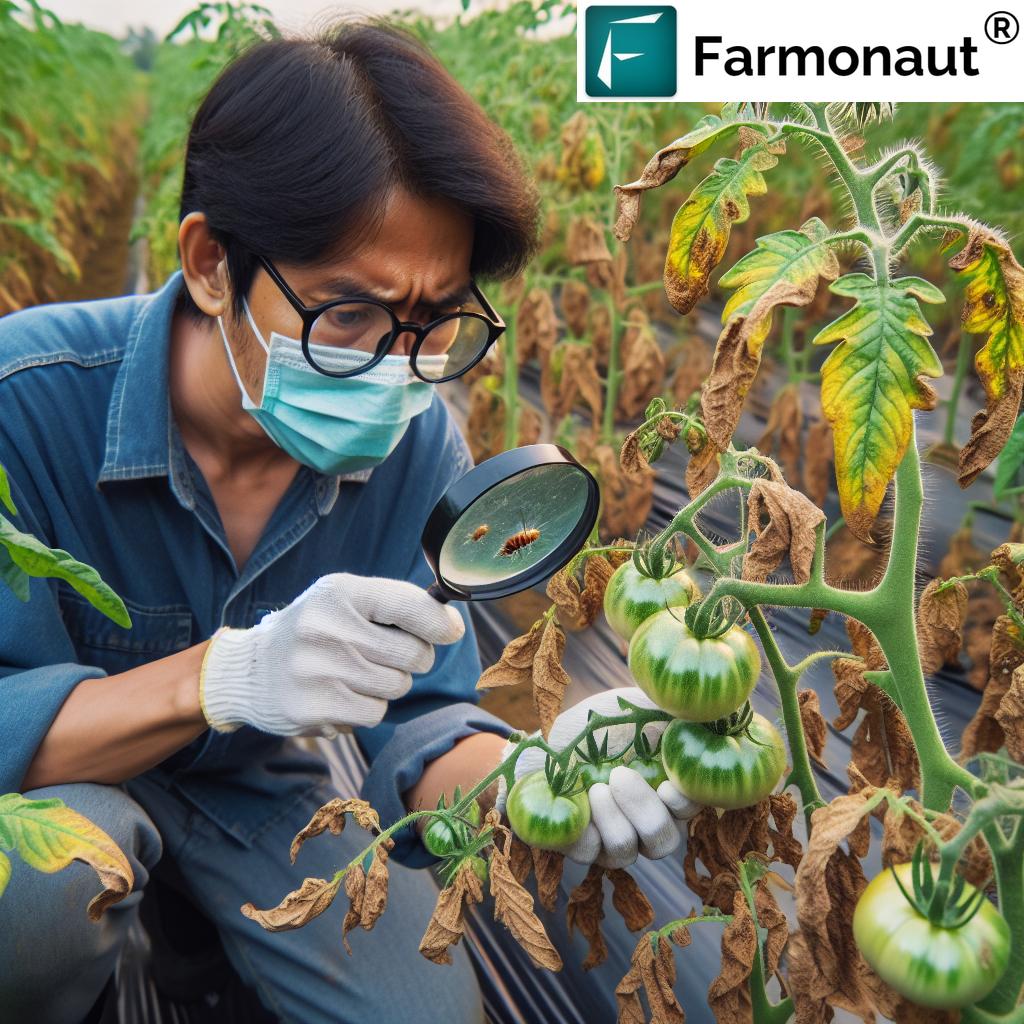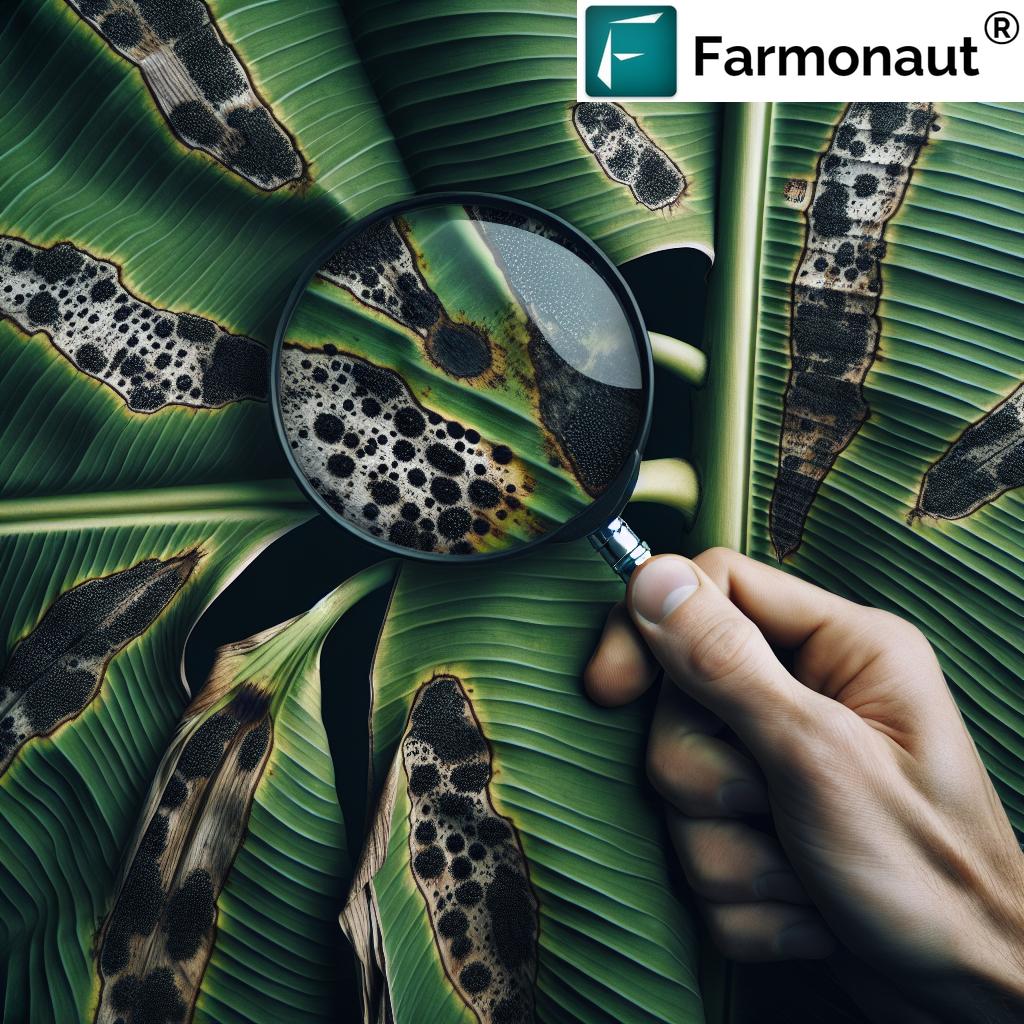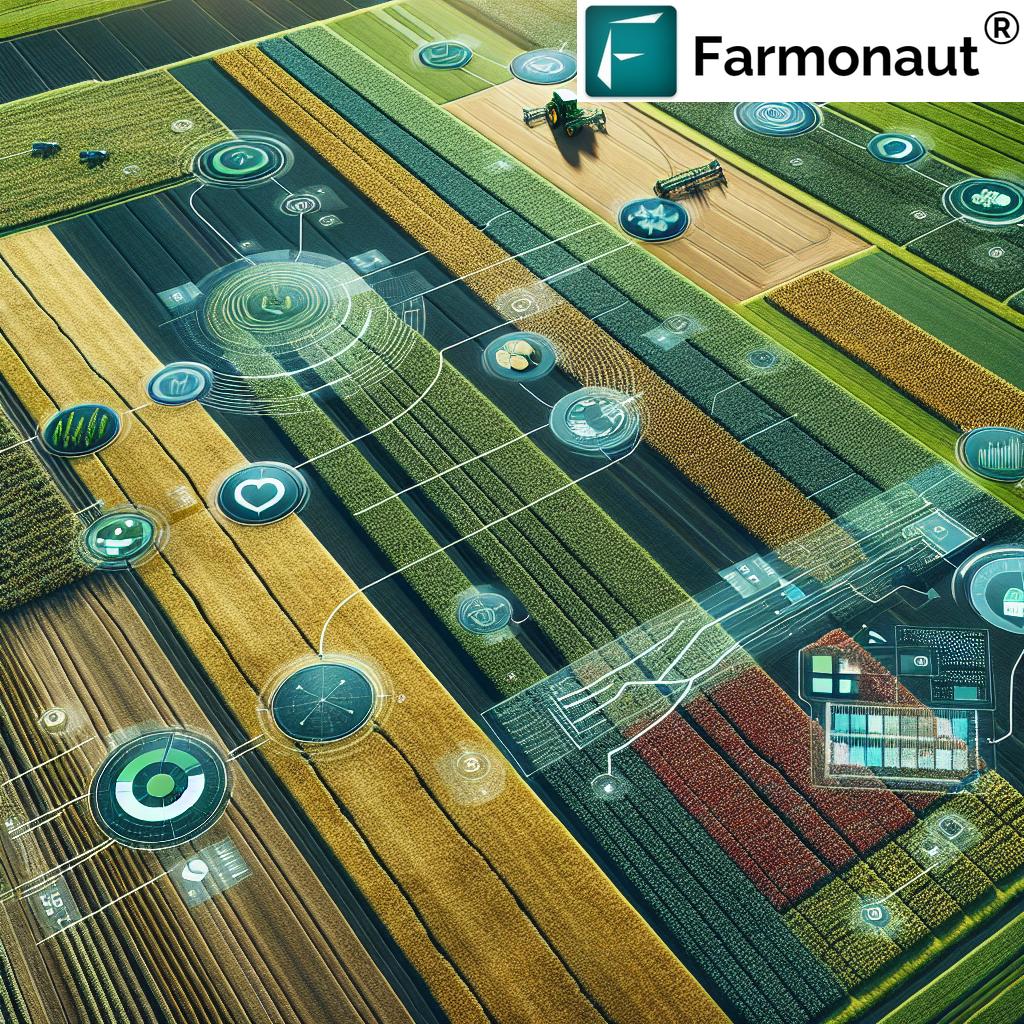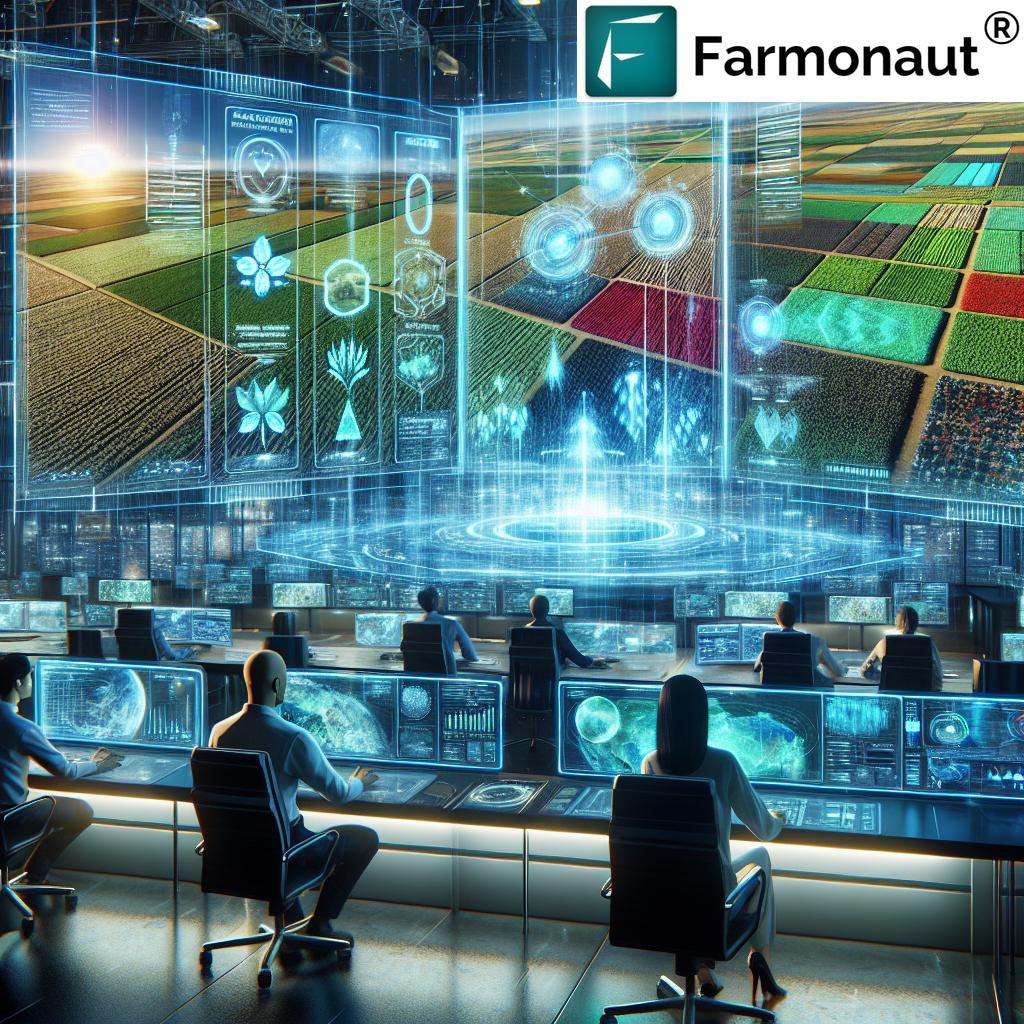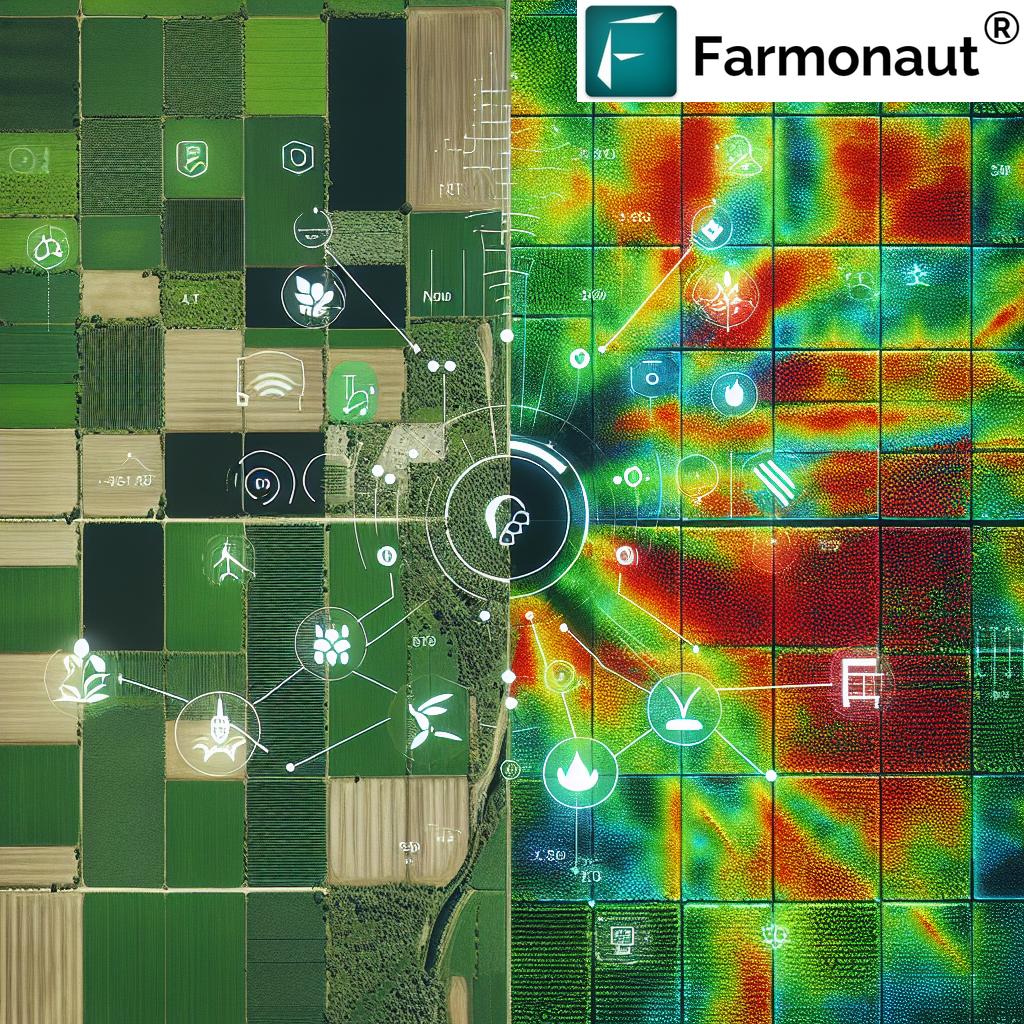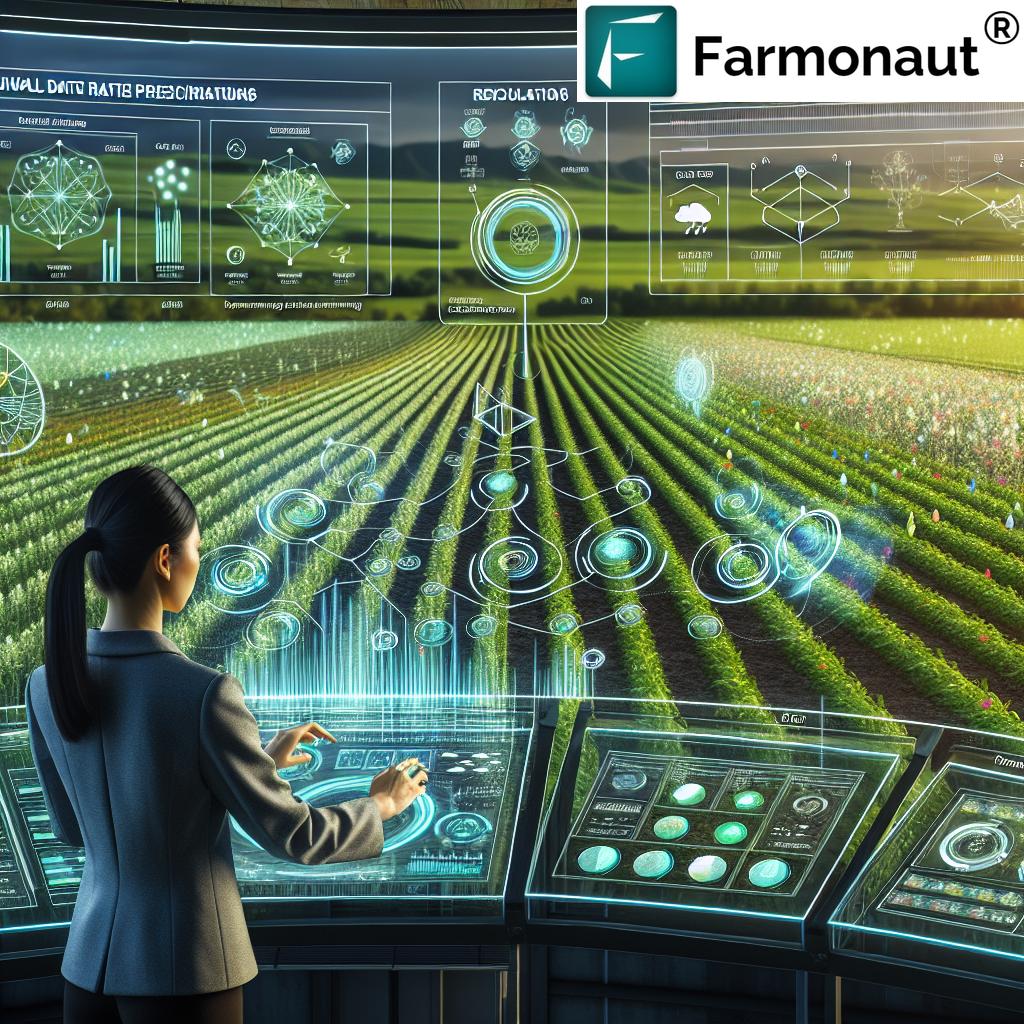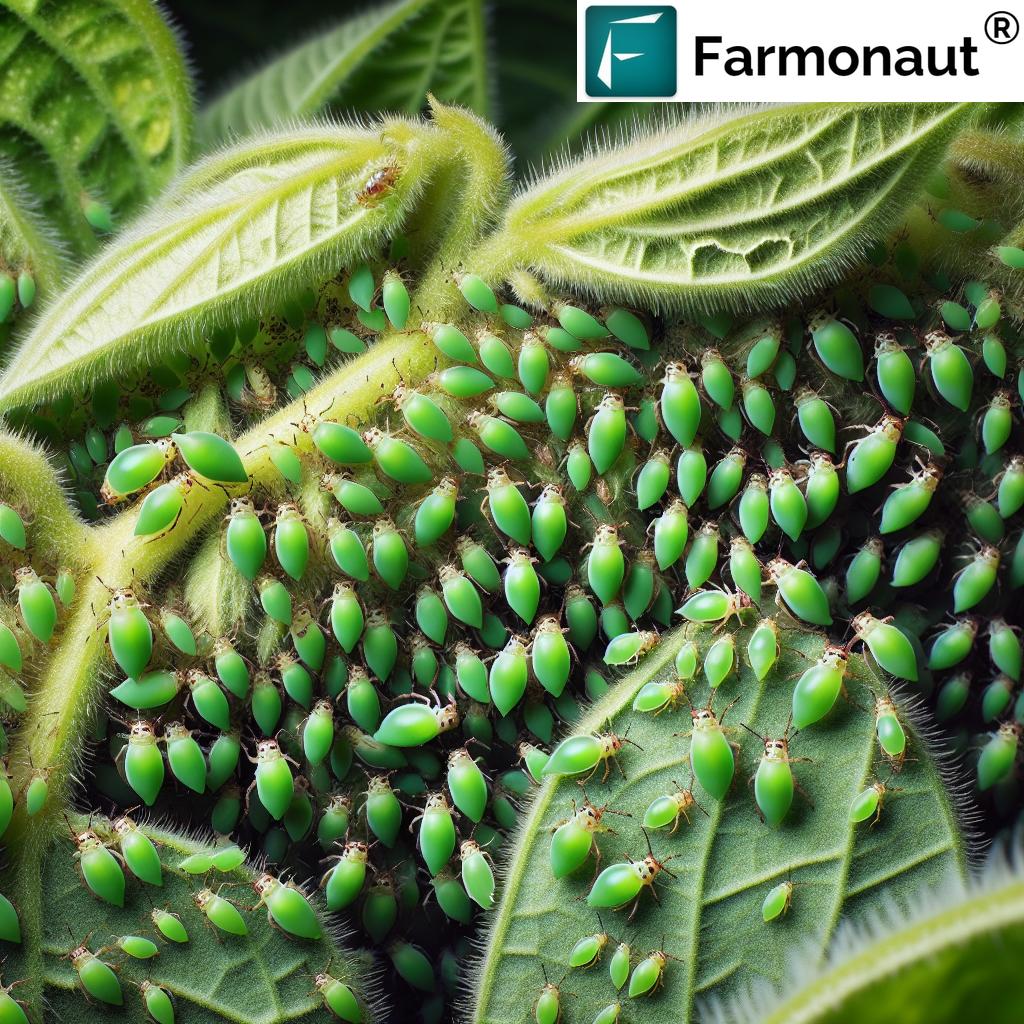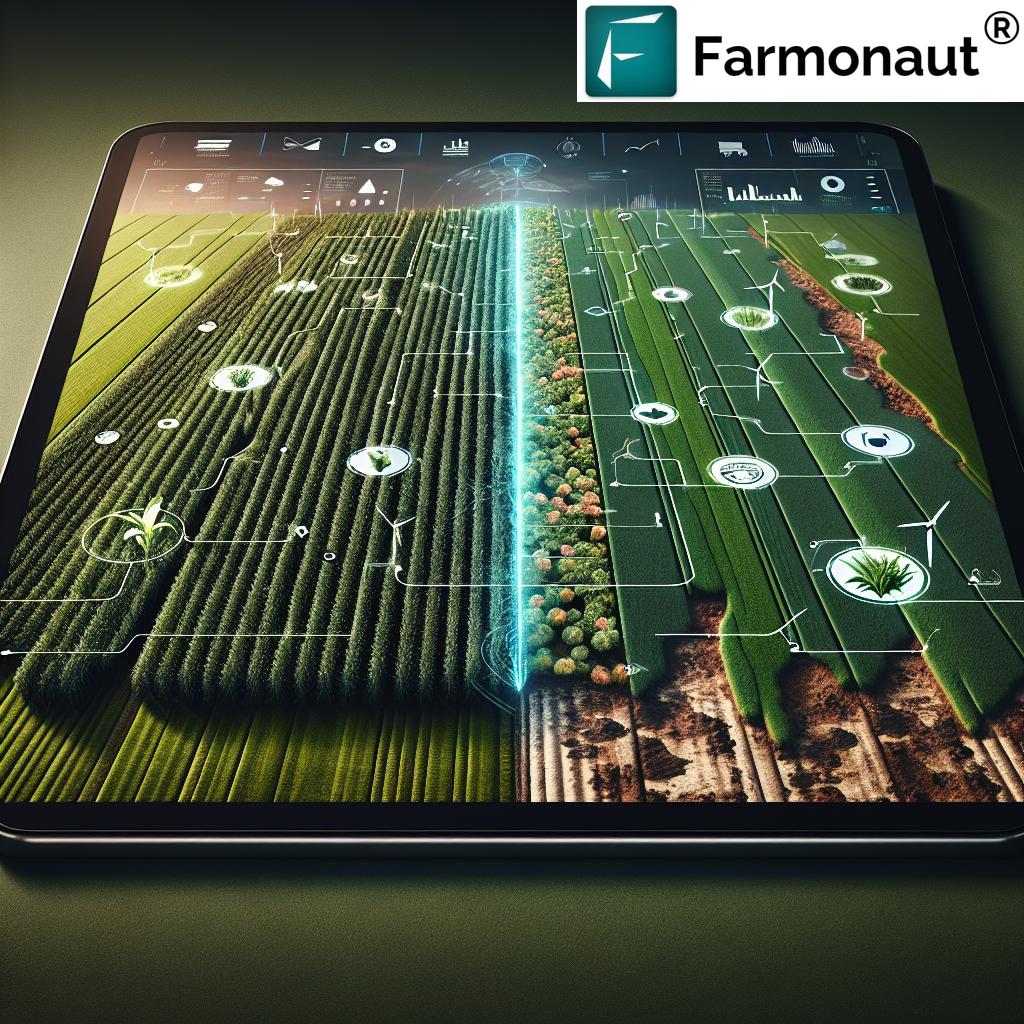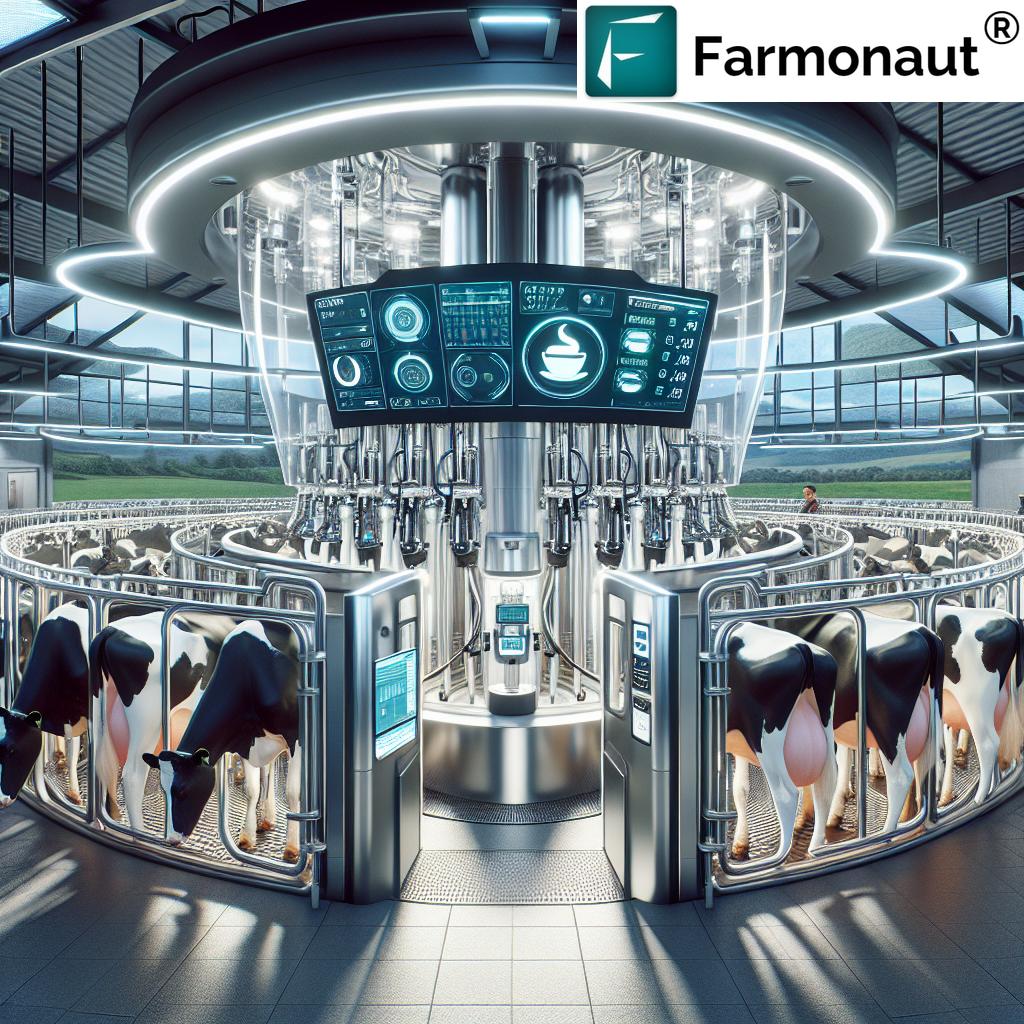Revolutionizing Agriculture: How Data-Driven Precision Farming and IoT are Optimizing Crop Yields and Sustainability
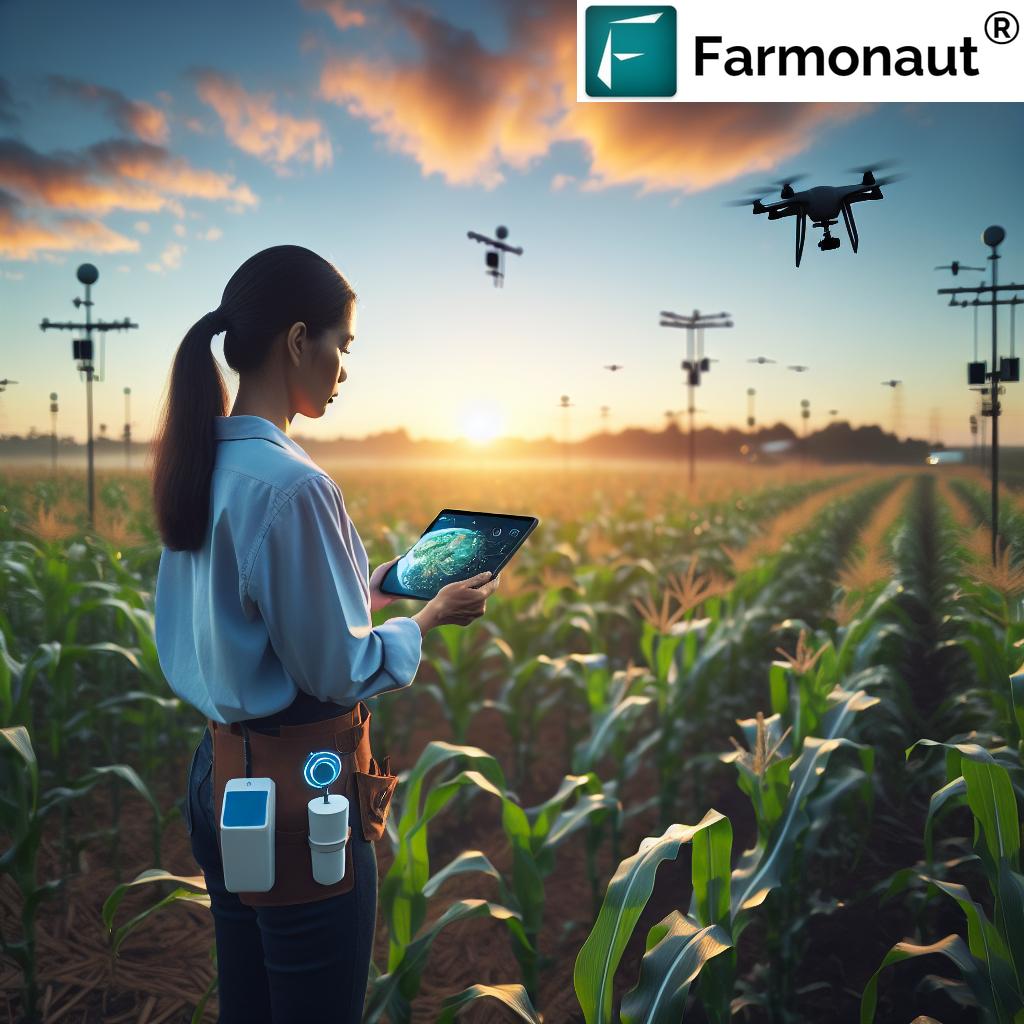
In the ever-evolving landscape of modern agriculture, we are witnessing a transformative era where data-driven precision farming and the Internet of Things (IoT) are revolutionizing the way we approach crop production, resource management, and sustainability. As we delve into this fascinating realm of agricultural innovation, we’ll explore how these cutting-edge technologies are reshaping the future of farming, optimizing crop yields, and promoting sustainable practices.
The Rise of Precision Agriculture
Precision agriculture, also known as precision farming, is a management concept that leverages advanced technologies to optimize agricultural practices. By utilizing data, geospatial tools, and remote sensing techniques, farmers can make informed decisions about their crops, leading to increased efficiency and productivity.
Key Components of Precision Agriculture:
- GPS technology: Enables accurate mapping and navigation of farmland
- Remote sensing: Provides valuable insights through satellite and drone imagery
- Variable rate technology: Allows for precise application of inputs based on field variability
- Soil and crop sensors: Collect real-time data on soil conditions and crop health
- Farm management software: Integrates and analyzes data for actionable insights
By implementing these technologies, we can achieve a level of precision in farming that was previously unimaginable. This precision allows for optimized resource use, reduced environmental impact, and improved crop yields.
The Role of IoT in Modern Agriculture
The Internet of Things (IoT) is playing a crucial role in the digital transformation of agriculture. By connecting various devices and sensors across the farm, IoT enables real-time monitoring and data collection, providing farmers with unprecedented insights into their operations.
IoT Applications in Agriculture:
- Smart irrigation systems: Optimize water usage based on soil moisture and weather conditions
- Livestock monitoring: Track animal health and behavior in real-time
- Greenhouse automation: Control temperature, humidity, and lighting for optimal plant growth
- Equipment tracking: Monitor and manage farm machinery for efficient operations
- Weather stations: Provide localized weather data for improved decision-making
The integration of IoT in agriculture is revolutionizing farm management, enabling farmers to make data-driven decisions and optimize their operations for maximum efficiency and productivity.
Data-Driven Decision Making in Agriculture
At the heart of precision farming and IoT integration lies the power of data. By collecting, processing, and analyzing vast amounts of agronomic data, we can gain valuable insights that drive informed decision-making on the farm.
Types of Agricultural Data:
- Soil data: Nutrient levels, pH, moisture content, and texture
- Crop data: Growth stages, health indicators, and yield predictions
- Weather data: Temperature, precipitation, humidity, and wind patterns
- Equipment data: Performance metrics, fuel consumption, and maintenance needs
- Market data: Crop prices, demand forecasts, and supply chain information
By leveraging these diverse datasets, we can create a comprehensive picture of farm operations and make informed decisions that optimize productivity and sustainability.
Advanced Analytics and Machine Learning in Agriculture
The application of advanced analytics and machine learning algorithms to agricultural data is opening up new possibilities for farm management and decision-making. These technologies enable us to uncover patterns, make predictions, and generate actionable insights that can significantly improve farm performance.
Applications of Analytics and Machine Learning in Agriculture:
- Yield prediction: Forecast crop yields based on historical data and current conditions
- Pest and disease detection: Identify potential threats early using image recognition
- Precision fertilizer application: Optimize nutrient management based on soil and crop data
- Crop variety selection: Recommend optimal crop varieties for specific field conditions
- Market trend analysis: Predict market trends to inform planting and harvesting decisions
By harnessing the power of analytics and machine learning, we can unlock new levels of efficiency and productivity in agriculture, leading to improved yields and more sustainable farming practices.
Satellite Imagery and Remote Sensing in Agriculture
Satellite imagery and remote sensing technologies are revolutionizing the way we monitor and manage agricultural lands. These tools provide farmers with a bird’s-eye view of their fields, offering valuable insights into crop health, soil conditions, and overall farm performance.
Benefits of Satellite Imagery and Remote Sensing:
- Wide-area coverage: Monitor large areas of farmland efficiently
- Regular updates: Receive frequent imagery for timely decision-making
- Multi-spectral analysis: Detect crop stress and health issues not visible to the naked eye
- Historical data: Compare current conditions with past seasons for trend analysis
- Cost-effective: Reduce the need for manual field scouting
By integrating satellite imagery and remote sensing into farm management practices, we can gain a more comprehensive understanding of field conditions and make data-driven decisions to optimize crop production.

Variable Rate Technology and Prescriptive Farming
Variable rate technology (VRT) and prescriptive farming practices are key components of precision agriculture. These approaches allow for the precise application of inputs such as fertilizers, pesticides, and water based on the specific needs of different areas within a field.
Advantages of Variable Rate Technology:
- Optimized input use: Apply resources only where and when needed
- Improved crop quality: Ensure uniform growth and development across fields
- Reduced environmental impact: Minimize excess application of chemicals
- Cost savings: Lower input costs through precise application
- Increased yields: Maximize productivity by addressing field variability
By implementing variable rate technology and prescriptive farming practices, we can achieve a more efficient and sustainable approach to crop production, optimizing both yields and resource use.
Farm Management Software and Digital Platforms
Farm management software and digital platforms are essential tools for modern farmers, enabling them to integrate and analyze data from various sources, streamline operations, and make informed decisions.
Features of Advanced Farm Management Software:
- Data integration: Combine data from multiple sources for comprehensive analysis
- Visualization tools: Present complex data in easily understandable formats
- Mobile accessibility: Access farm information and make decisions on-the-go
- Reporting and analytics: Generate insights and recommendations based on farm data
- Collaboration features: Share information and coordinate with team members and advisors
These digital tools empower farmers to manage their operations more effectively, leading to improved productivity, profitability, and sustainability.
Sustainability and Environmental Impact
As we embrace data-driven precision farming and IoT technologies, we are also addressing critical sustainability challenges in agriculture. These advanced approaches enable us to optimize resource use, reduce environmental impact, and promote long-term agricultural sustainability.
Sustainability Benefits of Precision Agriculture:
- Reduced water usage: Optimize irrigation through precise application
- Minimized chemical inputs: Apply fertilizers and pesticides only where needed
- Soil health preservation: Implement targeted conservation practices
- Carbon footprint reduction: Decrease fuel consumption through optimized equipment use
- Biodiversity protection: Minimize impact on non-target areas and wildlife
By leveraging data and technology, we can create more sustainable agricultural systems that balance productivity with environmental stewardship.
Challenges and Future Outlook
While the benefits of data-driven precision farming and IoT in agriculture are significant, there are also challenges to overcome as we continue to advance these technologies.
Key Challenges:
- Data privacy and security: Ensuring the protection of sensitive farm data
- Connectivity issues: Overcoming limitations in rural internet infrastructure
- Technology adoption: Addressing barriers to adoption among farmers
- Data standardization: Developing common formats for seamless data integration
- Skill development: Training farmers and agricultural professionals in new technologies
Despite these challenges, the future of agriculture looks promising as we continue to innovate and refine these technologies. We anticipate further advancements in areas such as artificial intelligence, robotics, and blockchain, which will drive even greater efficiencies and sustainability in farming practices.
Comparison: Traditional Farming vs. Farmonaut Satellite System
| Aspect | Traditional Farming | Farmonaut System |
|---|---|---|
| Data Collection | Manual, time-consuming | Automated, real-time satellite data |
| Field Monitoring | Periodic visual inspections | Continuous remote monitoring |
| Crop Health Analysis | Subjective, based on experience | Data-driven, using vegetation indices |
| Yield Prediction | Rough estimates | AI-powered accurate forecasts |
| Resource Optimization | Generalized approach | Precision application based on field variability |
| Decision Support | Limited, often reactive | Proactive, data-driven recommendations |
This comparison highlights the significant advantages of the Farmonaut Satellite System in precision agriculture, data-driven insights, and sustainable farming practices.
Conclusion
The integration of data-driven precision farming and IoT technologies is ushering in a new era of agricultural innovation. By harnessing the power of data, advanced analytics, and connected devices, we are optimizing crop yields, improving resource efficiency, and promoting sustainable farming practices.
As we continue to refine and expand these technologies, we anticipate even greater advancements in agricultural productivity and sustainability. The future of farming is data-driven, connected, and precision-focused, promising a more efficient and environmentally friendly approach to feeding the world’s growing population.
To learn more about how you can leverage these advanced technologies in your farming operations, visit Farmonaut’s application or explore our API services. For mobile access to our precision farming tools, download our app for Android or iOS. Developers interested in integrating our satellite and weather data can refer to our API documentation.
FAQ Section
Q1: What is precision agriculture?
A1: Precision agriculture is a farming management concept that uses technology to observe, measure, and respond to variability in crops. It involves using data from various sources like satellites, drones, and sensors to make informed decisions about planting, fertilizing, and harvesting crops.
Q2: How does IoT benefit agriculture?
A2: IoT in agriculture enables real-time monitoring of crops, soil, and equipment. It helps in automating irrigation systems, tracking livestock, managing greenhouses, and providing valuable data for decision-making, ultimately leading to increased efficiency and productivity.
Q3: What types of data are collected in precision farming?
A3: Precision farming collects various types of data including soil conditions, crop health, weather patterns, equipment performance, and yield information. This data is then analyzed to make informed decisions about farm management.
Q4: How does satellite imagery help in agriculture?
A4: Satellite imagery provides farmers with a broad view of their fields, helping to identify crop stress, pest infestations, and soil variations. It enables large-scale monitoring and analysis of crop health and field conditions without the need for physical inspection.
Q5: What is variable rate technology in farming?
A5: Variable rate technology (VRT) allows farmers to apply different amounts of inputs (like fertilizers, seeds, or pesticides) to different areas of a field based on the specific needs of those areas. This optimizes resource use and can improve crop yields.
Q6: How does data-driven farming improve sustainability?
A6: Data-driven farming improves sustainability by optimizing resource use, reducing waste, and minimizing environmental impact. It allows for precise application of inputs, better water management, and more efficient use of land and energy resources.
Q7: What are the main challenges in adopting precision agriculture?
A7: The main challenges include high initial costs, the need for technical expertise, data privacy concerns, connectivity issues in rural areas, and the integration of different technologies and data sources.
Q8: How does machine learning contribute to agriculture?
A8: Machine learning in agriculture helps in predicting crop yields, detecting diseases and pests, optimizing irrigation, and making recommendations for crop management based on historical and real-time data analysis.
Q9: What is the role of farm management software?
A9: Farm management software integrates data from various sources, provides visualization tools, generates reports, and offers decision support. It helps farmers manage their operations more effectively and make data-driven decisions.
Q10: How can small-scale farmers benefit from precision agriculture?
A10: Small-scale farmers can benefit from precision agriculture through affordable solutions like smartphone apps for crop monitoring, low-cost sensors, and shared data platforms. These tools can help improve decision-making and resource management even on smaller farms.



